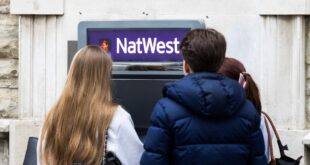Seasoned political watchers have had their eyes glued to the historic high drama of the EU Withdrawal Agreement – but they will have also been watching debates on the Queen’s Speech.
A peculiarly British mechanism by which the government of the day outlines its legislative programme, this Queen’s Speech brought into the world some 20 bills, including a Pension Schemes Bill.
The bill, all 187 pages of it, has already begun its journey through the parliamentary labyrinth; a voyage that is unlikely to end much before next summer, if we are lucky.
It had its first reading in the House of Lords the day after the Queen’s Speech and was due to return to that chamber on 30 October. Increasingly, pension bills are read in the Lords first before moving to the Commons.
Govt ‘missing a trick’ on pensions dashboard, MPs say
In ordinary times, it can take a bill of any significance between six and nine months to receive royal assent. But the times we inhabit are far removed from normal, so working out when this particular bill will finally becomes law depends on the timing of a general election and its result. A new government of whatever complexion will have to start at the beginning, with a new Queen’s Speech.
Need for consensus
The pensions minister, Guy Opperman, notes that the bill has cross-party support. In a video address to October’s Pensions and Lifetime Savings Association conference in Manchester, the minister also insisted that “consensus is vital to the bill”. The fewer the disagreements the speedier the passage of any bill, in usual circumstances.
- Certainly, there appears to be cross-party support for:
the measures that strengthen the power of The Pensions Regulator; - the legalising of collective defined contributions to enable Royal Mail to proceed with its plans; and
- the pensions dashboard project as a whole.
TPR welcomes ‘tougher regulator’ move after Queen’s speech
Equally the Labour party has also been clear that it wants to see a public pensions dashboard. The question is how far Labour sees this principle as compatible with the government’s current direction of travel towards simultaneously enabling dashboards operated by commercial providers.
The government has moved significantly away from the view it expressed in its feasibility study of December 2018 – it was clear then that the project’s initial focus was the public dashboard.
It has since moved to a position that favours multiple dashboards that ‘mirror’ the public dashboard. While this sounds innocuous enough, those commercial operators who favour multiple dashboards have a different destination in mind – one in which dashboard platforms are used by them to sell pensions consolidation services to the public.
But the public, when asked by pollsters, has repeatedly stated its preference for a single source of truth, hosted by the government, where they can view their pensions without becoming a marketing target. Where Labour ends up on this issue is worth watching.
The People’s Pension view is that a pensions dashboard that answers the question people want answered – ‘What have I got and where is it?’ – would be a big step forward in public policy.
People want a straightforward platform they can trust. Many savers, especially since the advent of auto-enrolment, have more pensions pots than Sinatra had comebacks. The project build is not going to be straightforward. Focusing on one big thing – maximum pensions coverage on the public dashboard – simplifies that build challenge.
Building public trust
Government has signalled that people should expect to be able to view all their pensions entitlements in one place at a minimum – not least because anything short of this will likely be seen by the public as a pledge not kept.
Get the coverage and functionality on the public dashboard right and the public, over time, will get more comfortable. Transactional services become feasible so long as the consumer protections are stiff, including a legal duty on all dashboards operators to put users interests first at all times.
In the meantime, it will be worth watching the legislative process.
Does the pensions dashboard remain solely a means of delivering a public good – that of greater awareness of pensions entitlements? Or is this objective now to be traded off against the interests of commercial pensions providers, who want to build their own dashboards with a view to selling services?
Gregg McClymont is director of policy at The People’s Pension
Follow him on Twitter @greggmcclymont



